| Revista Umělec 1999/5-6 >> Hell’s Conqueror | Lista de todas las ediciones | ||||||||||||
|
|||||||||||||
Hell’s ConquerorRevista Umělec 1999/5-601.05.1999 Tomáš Pospiszyl | africa | en cs |
|||||||||||||
|
If we get sick of Western art, we might take a look at Africa for a change and refreshment. Africa is a lucky continent as they don’t have museums of contemporary art there with the exception of a few places. African art’s advantage is that there is no market as we it from so called developed world. This developed market is, however, trying to find its ways to the black continent. We do hear about African artists but in quite a selective manner for those who don’t travel. An artist is “discovered“, invited to a few big shows in Europe and America, then he/she is forgotten or lowers himself/herself to producing work made suitable for the Western market. It is, however, wonderful to hear of African artists who are completely independent on our art and whose art is unexpectedly beautiful. Art in Africa does not copy Western art models, it stands on its own and it cannot be evaluated by using our standard criteria. It has its own forms and contents. We don’t have to and we must not look at it as exotic spice of our won culture - it is something completely different, but still comprehensible for us. It is not necessary to pointlessly define African art as a whole, its beauty for us lies in its scatteredness. The following text and images come from the book Contemporary Art of Africa compiled by André Magnin and Jacques Soulillou, published by Harry N. Abrams, Inc. in 1996. The book presents 53 artists and groups out of which we chose three.
Kane Kwei 1924 - 1991, Teshie, Ghana Samuel Kane Kwei Born 1954 in Teshie, Ghana The deceased Kane Kwei, author of sculpturally conceived coffins from Ghana, was one of the best known African artists. His work did not draw on any special local tradition but rather started a tradition of its own. From a craftsman, Kwei became an artist. He made his first unusual coffin when he wanted to honor a relative in a special way. The coffin met with such great success that it soon became a matter of prestige for every wealthy family in the city of Accra to have a coffin reminding of some event in the life of the deceased. This gave birth to coffins with such varied themes and shapes which, in addition to their original purpose, took the shapes of a boat, a house, fish, an onion, various insects, a chicken and even an elephant. The West has got to know the coffin in a shape of white Mercedes which was bought for the owner of local taxi company. After the creator of this new artistic genre had died, his son continued his tradition. Bodys Isek Kingelez Born 1948 in Kimbembele-Ihunga, Zaire This artist’s career has been a incredible and successful one. His work has been represented at an exhibition at the Museum of Modern Art in New York and other exhibitions of Western art. Bodys Isek Kingelez creates large models of fantastic cities of the future made out of paper and plastic. The question remains how can somebody who hasn’t really lived in a city come to understand it. His cities thus do without rational engineering architecture and its social links and functions. His cities take on a form of amusement parks, perfect projection tion of fantasy what a city should ideally look like. Bodys Isek Kingelez literally constructs archeology of the future. Can we imagine how somebody is able to perceive a modern city as real heaven on Earth, as fantastic architecture of dreams and secret desires? Abu-Bakarr Mansaray Born 1970 in Tongo, Sierra Leone Abu-Bakarr Mansaray is a sophisticated intellectual, making complicated yet naive metatechnologies and bogus-engineering projects. He perfectly describes what we need technology and engineering for - our fantasy, dreams and cultural mythology. (One of his known works is a certain “security mechanism“ which “prevents access to Paradise by anyone coming from Hell“.) He links to the African tradition of communicating with the spirits through material objects. His objects are not sculpturally executed idols, they take on the form of irrational machines and tools. The following is the artist’s text and instructions for the object pictured: “This machine has been built to extinguish the fires of Hell. Its extinguishing power is extremely great and allows the fires of Hell to be put out. One part of the gas that it uses to extinguish the fire is condensed and falls back down on Earth. These are the rains by which Africa is watered during what we call the rainy season. One part of these gases freezes and falls back on the European countries as snow. Every cold element that can be encountered in the atmosphere is, in fact, a residue of the gases this machine uses to extinguish the fires of Hell. The power of this machine is such that some of the angels of Heaven quarrel with it. Instructions: 1. Place five 1.5 volt R20 batteries in the appropriate compartment. 2. Press the button for the motor and watch what happens. 3. Press the button for the lights and watch what happens above. 4. Press the „OFF“ buttons to turn the power off. 5. To change the bulb of the rotating flash, take out the silver-colored cylinder and unscrew the bulb, put in a new one, and put the silver-colored cylinder back in place. This machine has four extremely powerful propelling rockets that also serve as legs on which it rests. The Hell Extinguisher gets its gas from these four rockets.“
01.05.1999
Artículos recomendados
|
|||||||||||||
|
04.02.2020 10:17
Letošní 50. ročník Art Basel přilákal celkem 93 000 návštěvníků a sběratelů z 80 zemí světa. 290 prémiových galerií představilo umělecká díla od počátku 20. století až po současnost. Hlavní sektor přehlídky, tradičně v prvním patře výstavního prostoru, představil 232 předních galerií z celého světa nabízející umění nejvyšší kvality. Veletrh ukázal vzestupný trend prodeje prostřednictvím galerií jak soukromým sbírkám, tak i institucím. Kromě hlavního veletrhu stály za návštěvu i ty přidružené: Volta, Liste a Photo Basel, k tomu doprovodné programy a výstavy v místních institucích, které kvalitou daleko přesahují hranice města tj. Kunsthalle Basel, Kunstmuseum, Tinguely muzeum nebo Fondation Beyeler.
|








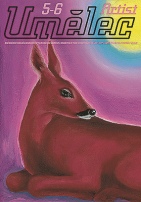


















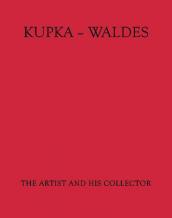
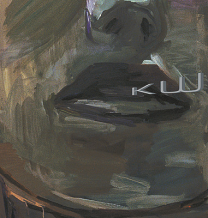
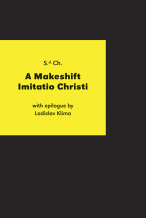
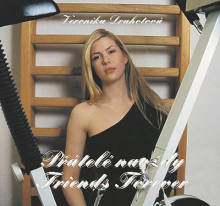


 New book by I.M.Jirous in English at our online bookshop.
New book by I.M.Jirous in English at our online bookshop.
Comentarios
Actualmente no hay comentariosAgregar nuevo comentario